Attractive Models



While at the comic book store I chanced to come across a British Magazine, Sci-Fi & Fantasy Models, which features a huge interview with the people who created the Kilrathi for the Wing Commander Movie! I've omitted a bunch of it (that had nothing to do with WC), but check out this large article below... with some great pictures too! Be warned, contains uber spoilers...
Creating Prosthetics/Animatronics/Makeup FX for Wing Commander - The MovieAn interview with Nick Williams and Pauline Fowler of Animated Extras.
Animated Extras is renowned for being one of the U.K's premier Prosthetics/Makeup FX Houses, with each project taking the facility from strength to strength. One of their most recent projects has been the creating of an alien race, the Kilrathi, for the film adaptation of the popular CD-ROM game Wing Commander. I visited Shepperton Studios recently to speak to Nick Williams and Pauline Fowler about their involvement on Wing Commander, which was recently filmed in Luxembourg, and about other projects they have worked on over the previous year.
SF&F: How did Animated Extras become involved with the Wing Commander production?
Nik: We started off by meeting the director, Chris and the producer, Todd Mayer, in a hotel in London. They asked us to become involved in the production. We then met up with Chris and Peter Lamong (of Titanic fame), who was the head of the art dept.SF&F: Animated Extras' main contribution to the film was the construction of the cat-like alien race, the Kilrathi. Were you also involved with the design of these creatures?
Nik: Yes, we were. Chris had worked on the motion sequences on one of the Wing Commander games, where they had had feline-like Kilrathi. However, this time Chris wanted something that had never been seen before, and asked us not to look at the CD-ROM game for reference. Dave masters produced several designs and then it went quiet! We assumed by this that we didn't have the project, then around Christmas it came up again. Our original designs for the Kilrathi utilized a combination of African and Japanese samurai warrior influences. Chris, however, wanted them to be more feline, but still wanted to keep the samurai aspect.SF&F: How did you go about creating the Kilrathi?
Nik: Firstly, one/third scale maquettes of various designs were sculpted by Pauline and Julian Murray. We only had six weeks to build eight full size Kilrathi. Two of them had a huge amount of facial expression; another two were "backgrounds" that had slight mouth movements while the remainders were just static faces but were still full suites. Our sculpting department split the work up, with someone working on the head, someone on the hands, etc. When this was done, we put it together on a full zied person. One of the people who worked on it - Mark - ended up as one of the Kilrathi. It looked a bit like him as well! (Laughs) This was great as we could try things out. For example, we could see if you could run around in the costume, and it also meant that we could see if anything needed altering. There were quite a few discussion about the Kilrathi teeth, as to whether they should be lion-like or several rows of sharp teeth. In the end, Chris decided that they should be a mix, which was great, as we didn't want them to look too wild. We were aiming for a mean appearance but they still had to look intelligent and capable of conversation! The Kilrathi are dressed in armor, and the trouble with this in the time was that once the design was okayed, there was no chance to go back and alter things. It was very much a case of choosing upon a design and deciding upon the rout that we were going to take in constructing it. We thought that we would alter the proportions of the Kilrathi legs and that we would give them a third joint and an exo-skeletal appearance. Our plan was that the third joins would flex and disguise where the knees of the operator were located.SF&F: Were the suits individually tailored for the operators?
Nik: To a point. We didn't know who we were going to get in Luxembourg, so they had to be fairly standardized. Chunks of the belly were soft so you could get flexibility out of them. The suit was primarily based on a backpack, from which the legs were suspended. The legs actually had mechanical joints on the knees and the ankles so they moved where we wanted them to, as opposed to where humans move. You have the problem of when a human operator is in a costume the legs twist slightly inside, so the joins had to be more flexible than we originally made them.: Another problem was that Chris had originally wanted to make them eight feet tall, but Peter Lamont wanted them smaller due to the size constructions on set. But Chris was very keen on this idea of the Kilrathi towering over people, so we ended up with them standing on eight-inch stacks, but their feet are at an angle. This gives the impression of a second joint in the position of the operator's heel. The only problem with this is that it is much more difficult ot balance yourself. In the end, we had to redesign the shoes around five times to get things to work properly. We started about working through Chris, but we did a lot of initial design with Peter. We e-mailed the designs off to Chris, but I think there is a big difference between a drawing and seeing the design in the flesh, so it was great when he came over after Christmas.SF&F: What materials did you utilize in the construction?
Nik: They were constructed mostly out of glass fiber on the armor areas, with metal fabric lined with polyurethane foam for the flexible areas. The glass fiber areas were given a burnished bronze finish. The finished effect is a kind of bronze armor with a flexible chain mail underneath. For the face and the hand gloves we used foam latex. We looked into using silicone, but the trouble with silicones is that they are heavy. The head on the Kilrathi was mounted so the actor saw through the throat, and if we had made it out of silicone, it would have lolled around, so we wanted to keep the weight down.SF&F: Did any problems occur in the construction stage?
Nik: The temptation when you do freehand designs is that they look great, but trying to make them work can sometimes be a practical impossibility. We try to base them over a figure, because then you are guaranteed proportions between the shoulders, the length of the arms, etc. Basically, everything is how it should be. Not that it gets rid of all of the problems, but it enables you tog et closer to what the designer has envisioned. Even when we were out in Luxembourg, we were still changing things. The Admiral, the Captain and the Office Kilrathi animatronic heads had to be distinctly different from the others, as they would not be wearing helmets like the others. They also had high collars. Another thing we added was retractable claws to the gloves for the fighting sequences. Other things that hadn't been discussed in the U.K were the fact that they wanted to shoot the Kilrathi in the head, the chest and even wanted to blow some of them up. So there was a lot of stuff we had to work out while we were there. In the climax of the film, the Kilrathi ship's bridge is blown up. The Floor FX team sent a fireball from the bridge down a corridor on the ship. In this scene you see several Kilrathi, who are running towards the bridge, getting blown apart. So, the stunt personnel were wearing the costumes, which presented another problem, as the glass fiber bodysuits would not have been soft to land on! So, we had to chop bits of the suits away so that they could wear them and land safely. Some of the Kilrathi stunts had to be rigged with bullet hits. As with a lot of things in the film industry they didn't shoot the Kilrathi looking brilliant at the beginning and being blown apart at the end of the shoot - it was done when they could schedule it in on set. Inevitably, the firs suits we made were virtually destroyed by the third day, and we had another four weeks to go, so we were frantically repairing them. There weren't really any other surprises, but it was a challenge working things out in Luxembourg.SF&F: Did you have to build any special suits or panels specifically for pyrotechnicians to utilise, which would produce the desired effect - say - in a shoot-out?
Nik: We took the moulds with us to Luxembourg, so we could produce pieces that we could cut-pre-arranged holes in, which would then be rigged with pyros, blood bags and bits of guts. Green blood, of course! Finally, they would be covered with a thin layer of plaster and painted to blend in with the rest of the armor.SF&F: Were there many re-takes with the pyrotechnics?
Nik: No, it went pretty well. There would have been no chance for a re-take with the fireball sequence, as it destroyed the set! (Laughs)SF&F: Oh!
Nik: It was intentional. (Laughs)SF&F: How did you go about the process of designing and dressing an animatronic head?
Nik: They all utilized the same basic head, so we would change the visual appearance by changing the foam or changing the paintwork. With regards to the mechanics, one problem was that we didn't even have a skullcap to fit the actors inside the suits, because we didn't know who they were going to be. So we had to make a universal skull cap, which means it takes up more space in the head. Once it was made, we knew how much space we had left inside, which was then jam-filled with servos to operate the fake eyes. With the Kilrathi eyes, I didn't want a boring blind; I wanted them to have nictating membranes. Personally, I think it looks meaner than a normal blink. Another thing we tried to do was not make them look to human when they spoke. We wanted them to sound as if they could never speak human words, emphasizing the point that they were from another race, and keeping it more feline, like a lion roaring, rather than a human speaking words.SF&F: Did you spend hours punching hairs into the heads?
Nik: They all had goatee beards except the Admiral, who had a few extra odd white hairs people can get when they're old. Chris wanted them to be quite sleek, so they're completely smooth skinned as if they had evolved and stood up on two legs, and in the process of evolution they've lost their facial hair.SF&F: Something like that must be a tremendous challenge for you. {Referring to The Alchemist}
Nik: To be honest, things like the Kilrathi are much more so. There is so much of it, part costume, part animatronics, part rigid, etc.Caption: The spread: The animatronic heads and body suits created by Animated Extras for the Kilrathi, a feline like alien race featured in Wing Commander.






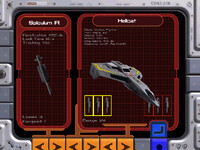

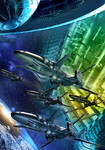
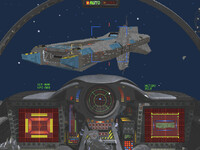
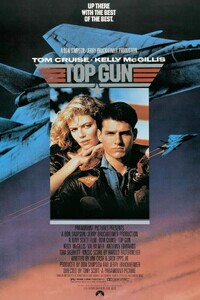
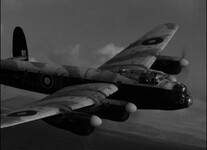
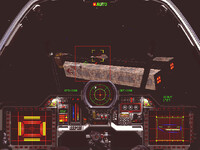


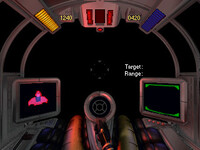

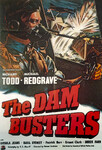
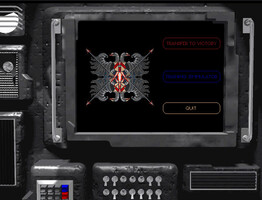
Follow or Contact Us